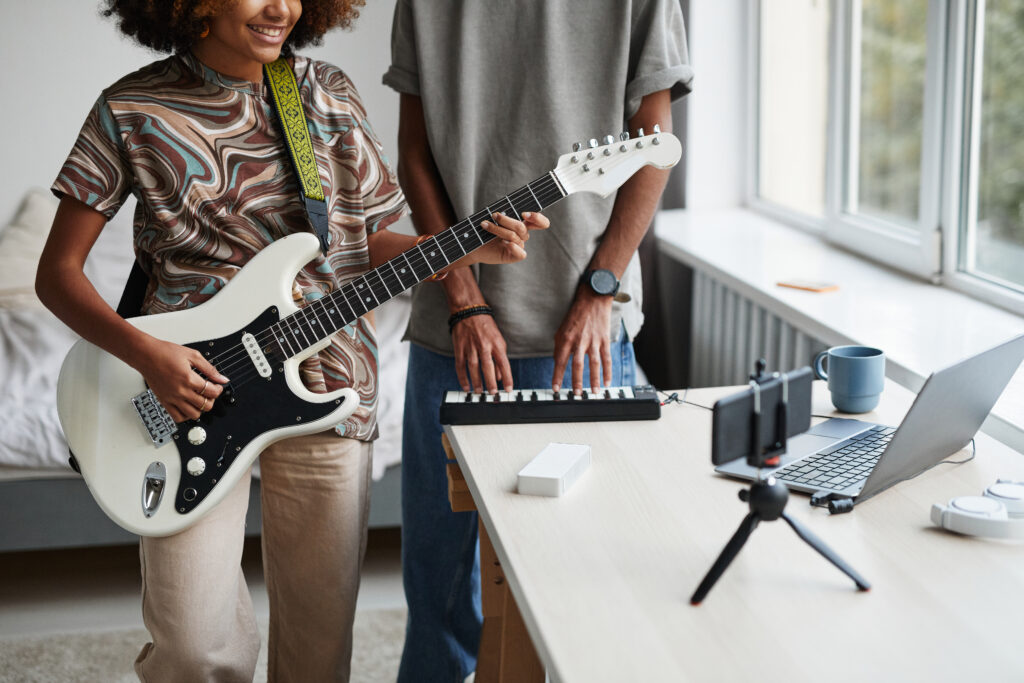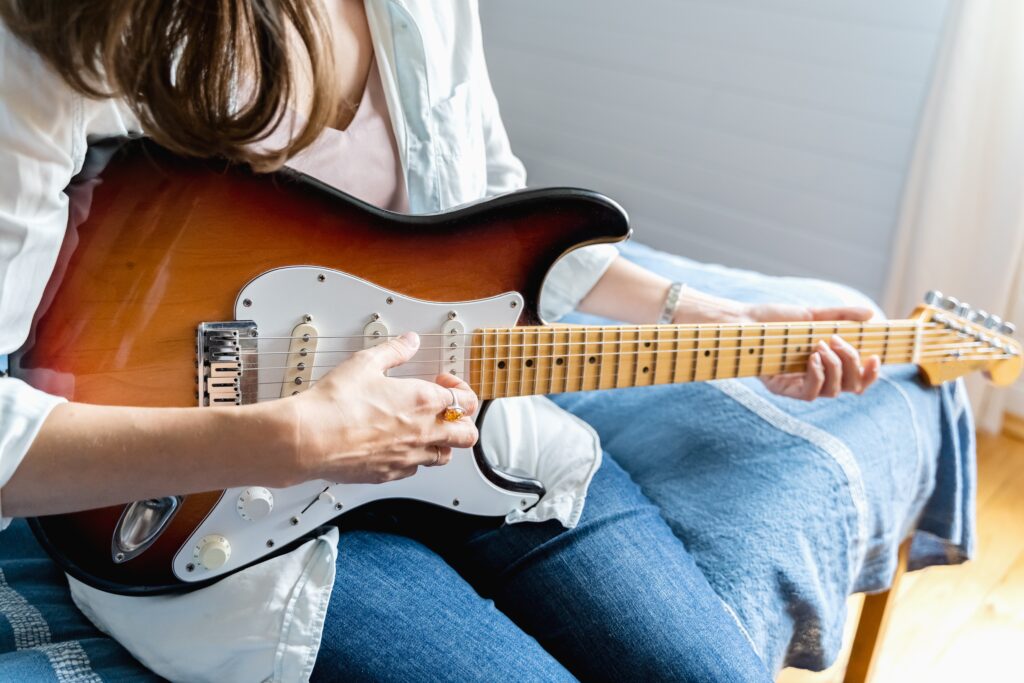
This guest article “Acoustic Treatment – How Does It Affect Recording?” was kindly contributed to the GAK Blog by Shawn Leonhardt for Guitar Tricks and 30-Day Singer.
With more people recording vocals and music from home, the idea of acoustic room treatment is very popular these days. There is no set of standards for what treatment you need.
It will all depend on your recording space, equipment, and other factors like budget. In this article, we will look at how acoustic treatment can affect recording for those home producers that play guitar and sing.
Is Acoustic Treatment Necessary?
Obviously, many musicians have recorded great songs and albums live or even in lo-fi situations. However, even in an impromptu setup, the engineers and producers always attempt to minimize any potential problems.
Using high-tech gear or simply listening can help you identify these issues. Before the actual recording commences, the people paying for it want to be certain that they can get the best sound possible.
Often the music producer, singer, or guitarist will focus on the best gear they can buy. This is a great idea.
However, you can have the best professional setup guitar, top-of-the-line microphone, incredible audio interface, and the greatest studio monitors. Without proper soundproofing or acoustic treatment, all that gear will not be that powerful or useful.
Before even studying the specifics of what acoustic treatment you may need, it is first important to identify your problems.
When you sing, play guitar, and record yourself what issues arise? Do you hear reverb, echo, high pitch electronic interference, low rumbles, or any other errant sounds on the recording? Are you trained properly in using your gear?
Even someone learning how to play guitar can notice bass traps or extra echo. Better gear helps minimize bad recording issues, but it is not the ultimate solution.

Problems and Solutions of Acoustic Treatment
Monitor, Gear and Desk Placement
Speakers or monitors can be adjusted and placed in specific ways to improve sound quality. This is one of the simplest ways to achieve better sound. Make sure they are at ear level, appropriately spaced, and following the manufacturer’s recommendations.
Start with proper gear setup, record, and then listen to the problems you hear. Maximize the best sound you can get in your properly chosen recording space.
Acoustic Absorption
Our best method of getting rid of unwanted sounds is to try and absorb them with bass traps or acoustic panels. The way the absorbing surface is manufactured will affect whether it deals with low, mid, or high frequencies.
Some acoustic absorbing panels are called ceiling clouds as they are designed for that part of the studio. Some studios use lots of absorbing panels while smaller setups may just have a few placed in problematic wall areas.
Acoustic Reflection
We are not always looking to absorb the sounds we play, to get a certain vibe and space in the music there may need to be acoustic diffusers.
Diffusers reflect sound in a controlled manner and can modify the sound based on their shape. Sometimes the shape can be round, square, or pyramid either way the purpose is to reflect the sound off something other than the flat wall surface.
Acoustic Resonance
The sound you make when playing or singing will cause the room to resonate and vibrate, this can cause windows to shake, bad feedback, and other issues.
To minimize resonance, you can use special resonators designed to absorb different vibrations or place sound blankets, foam, and other materials. Ensuring that your instruments and guitars are intonated and set up properly is also important. This is especially important for beginner guitar players. Make sure they aren’t creating problem frequencies.
Hardware and Software
Modern technology has a huge variety of hardware and software programs that alter our recorded material and filter out problematic frequencies.
Even properly treated studios still use various plugins to fix their issues. Sound-enhancing tech is an excellent way to improve your recording on a low budget, but it is not a miracle worker. You still must fix problems that occur in your space.

How Do I Acoustically Treat My Recording Space?
First start small, even if you happen to be lucky with a high budget! Not every sound absorber or diffuser will be appropriate for all rooms, you want to improve your sound, not just throw material and money at it.
Start by first identifying the problems that you have and work from there. Many producers will place foam and acoustic panels in places based on aesthetics, not science!
Obviously, if you have a deeper budget you can get gear that will help you identify frequency issues and various reflective points. Otherwise, you can look at pics of other similar size home studios to get an idea of where to start.
After making changes to the acoustic treatment, make sure to record and evaluate the sound quality. Afterwards, listen over your monitors and not on your headphones to get the best response.
If you are working on a super tight budget then experiment with different materials like foam and insulation. Keep in mind that acoustic treatment is a separate problem from sound isolation, but some of us may be facing both issues.
Locate and treat the problem parts, perhaps you have an echo bouncing off one wall, start by hanging a thick blanket over and seeing if that helps. The more places the sound must bounce the more issues and room correction will be necessary. Before investing in expensive acoustic treatment materials, try making small fixes to see the changes in sound.
Building Your Own Booth
You can build your own vocal booth to record your playing, singing, and voice. It can be sturdy construction or simple PVC pipes wrapped in soundproof blankets. Of course in those situations prepare to be hot and not as comfortable as a fully vented room.
However high or low-budget solitary rooms are not always the best recording scenarios. You must be sure it will give your final recording a better sound.

Neutral Is Best
Sometimes when we try too hard to keep things silent or free of outer noise we end up deadening our space. There is a point where you can go too far in acoustic treatment and end up making the recording worse.
We don’t want reverb or resonance to be too much or too little, in the end, we want our recording space to often be as neutral as possible so the clean signal can later be adjusted in the DAW. You don’t want your guitar chords bouncing off the walls!
Acoustic treatment will not always involve foam, panels, diffusers, or other physical sound adjustments. It will also require you to look at other electronics, frequencies, and any potential interference that will affect the recording.
Each home producer, singer, and guitarist will have to assess their space and make the best decisions based on budget. Even if you cannot make major changes, there are always small steps to take to make sure your recording is the best it can be!